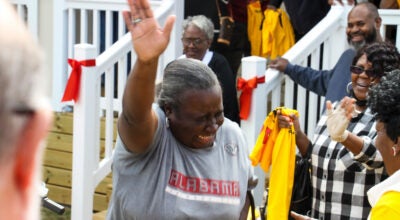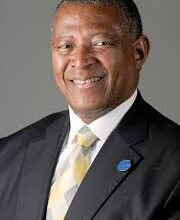Process begins to redraw districts
Published 9:54 pm Tuesday, October 18, 2011
Tuesday’s public hearing on redistricting at the St. James Hotel was centered around drawing lines both literally and figuratively. Dallas County’s representation in Montgomery and concerned citizens had a chance to share their ideas and discuss concerns about where shifts could take place and what would be acceptable changes.
For the most part, districts in the Black Belt stand to gain a significant number of voters. Alabama’s Senate District 23, which is represented by Sen. Hank Sanders, must gain approximately 24,624 voters, while Darrio Melton’s House District 67 must gain 7,643. David Colston’s District 69 must also gain 7,459.
The public hearing was organized by the state’s Permanent Legislative Committee on Reapportionment and the numbers provided are what each district — both state senate and house — must gain or lose in order to conform to constitutional guidelines.
Though the committee has all the figures in place, and people have made suggestions on where the lines could shift, Sanders said it is difficult for people to offer an informed opinion without a concrete point of reference.
“Whenever you are talking in the abstract, it really doesn’t mean anything,” Sanders said. “Whenever you’ve got something specific to react to, it just means a lot more. I hope that once ya’ll develop a tentative plan, you will come back around so people can react to it.”
These sentiments were echoed by Selma resident Collins Pettaway.
“I would like the opportunity to be able to be heard, even if it’s just in writing, after you have really adopted what we are going to go forward with because there could be some changes and tweaks,” Pettaway said. “I want to see what is going to be there, and then have that chance to address it. It would be good to do it in person if possible.”
One of the biggest concerns of not having a say in the final product, Sanders and Melton said, is the concept of “packing.” This practice, Sanders said, shifts African American voters into districts that might not be represented by that particular dynamic, removing them from a majority district to balance things out.
This, he said, can shift election results significantly.
“I would hope the plan you construct would take that into consideration,” he said.
Such a shift, Melton said, will impact not only elections, but the people represented in each district.
“It’s my prayer that we look at not who is in office, but the lives we will impact,” he said. “When we look at districts in the Black Belt, those are many lives that have been overlooked for many years by the state of Alabama. We want to make sure we do right by those individuals in those districts.”
A common theme of gaining voters and losing representation seemed to be a very real fear for those in attendance. Selma resident Lebaron Mack said he hopes new lines will be drawn with the best interest of current residents in mind.
“It is my prayer that we will not allow partisan politics to engage in such an activity where individuals who have representation at this point, no longer have representation in the future,” he said.
The lines will not officially impact an election until 2014, and might not even be approved during the 2012 session.
For now, any plans regarding shifts are merely suggestions, however, public input is expected to play a role in how lines will be drawn.






